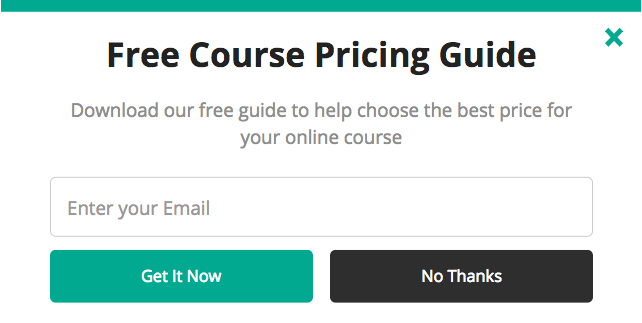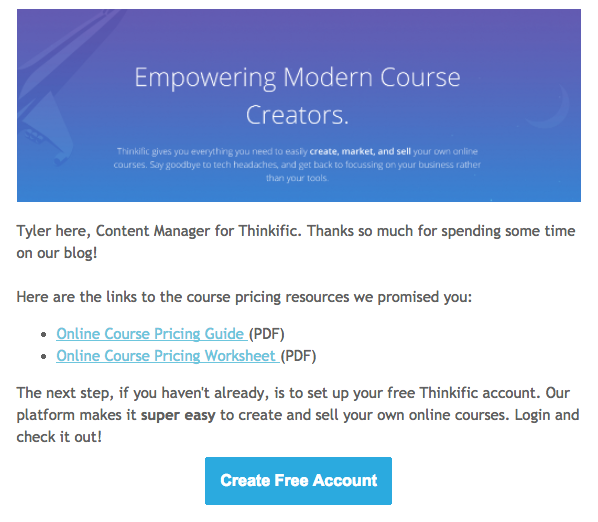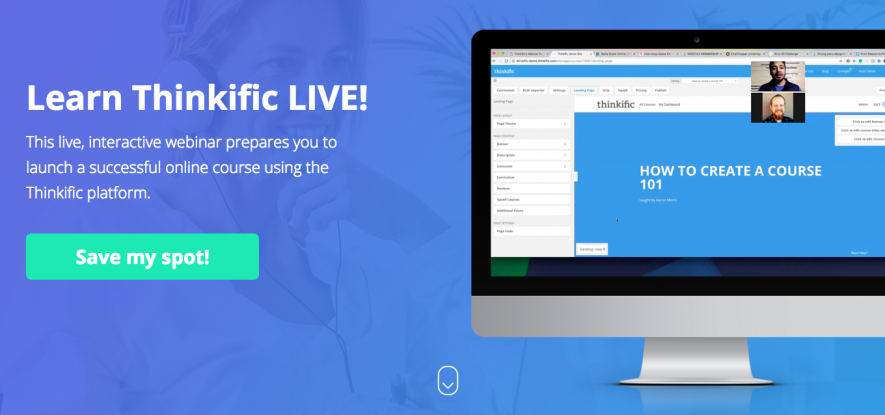Sid Bharath The 3-Step Process to Turning Blog Readers into Paying Customers 52 Wow-Score The Wow-Score shows how engaging a blog post is. It is calculated based on the correlation between users’ active reading time, their scrolling speed and the article’s length. Learn more The 3-Step Process to Turning Blog Readers into Paying Customers
- 62
- 9
- 10
Let’s not mince words here. Your blog isn’t doing well. Or maybe it is but it could be doing better. The point is you have visitors, even leads, but they are not turning into customers at a decent rate.
Do you have a traffic problem, or a conversion problem?
Trick question. You actually have a funnel problem. You see, your blog is at the top of your funnel. Creating epic content and sending traffic to it is just the first piece. There are steps, i.e., the rest of the funnel, that happen after someone reads a post.
In this post, we are going to look at what happens next.
Start With Epic Content
Before we get into what happens next, it is important to revisit this concept of “epic content” and define what that means. There are two main characteristics of epic content.
They Target A Specific Audience
Your audience depends on your product or business. I am assuming you already know who you are trying to reach. If not, you have bigger problems than a low-converting blog.
Now, most businesses serve multiple audiences. However, when writing your blog post, you need to pick just one of those audiences. The more audiences you try to appeal to, the less appealing you will be.
For example, Fitbit serves weightlifters as well as yoga practitioners. Those two audiences might have a small overlap but, in general, they are pretty separate, each with their own needs and characteristics. It would be very tough to write an article that appeals to both sets unless it is really broad and generic.
They Solve A Specific Problem
The audience you are targeting has a problem (or multiple problems) that your business solves. Weightlifters want to get bigger, stronger, leaner, and more. Each of those represents a specific problem.
Pick one problem and solve it in your blog post. Don’t just touch upon the solution. Actually go as deep as possible and give them a step-by-step solution. Make it so detailed that they would need to bookmark it or take notes. You will see why this is important soon enough.
Don’t forget to tie your business to the solution you are outlining so that you start building that connection in your readers’ minds. After all, you eventually want them to buy from you to solve that problem.
Here is another example of an article that solves a specific problem for a specific audience. This one is about pricing an online course and it is targeted specifically at people who sell courses online and need help figuring out what to charge for it.
The article clocks in at over 6,000 words and that's because it goes really deep into pricing psychology and gives readers a complete understanding of what they need to do moving forward. No questions are left unanswered.
Offer A Hyper-Specific Free Resource
So you remember how I said you should make your post so detailed that readers need to bookmark it or take notes? Well, not many people actually do that, even if they want to.
That is where the free resource comes in. You can offer a checklist or PDF that summarizes your post and makes it easy for them to reference in the future. Unlike the typical lead magnet you see on most blogs, this one is specific to just that post.
And that is the beauty of it. Because it is so specific, it is highly appealing to everyone reading that post, which means it is going to have a much higher opt-in rate.
To deliver the lead magnet, you can use tools like Sumo, Optin Monster or Vyper. These allow you to embed an opt-in form in your blog post. You can then connect your autoresponder, like Mailchimp or ConvertKit, to email out the PDF after someone opts-in.
In the previous example of the post around pricing online courses, we created a PDF summary plus a worksheet where readers can actually work through calculations to figure out the right price for their course.
 A content upgrade to collect email addresses from blog posts
A content upgrade to collect email addresses from blog posts
Guide Your Email Subscribers Through A Sales Process
Ah, the coveted email address. You now have permission to pitch them, right? Or maybe you skew to the other direction and barely email them.
As you might have guessed, both approaches are wrong. The first will make them unsubscribe immediately, while the second will make them forget you exist.
You want a good mix of helpful content and product mentions once you get that email address. Ideally, you are keeping track of which blog post they came in through, which means you know which audience bucket they belong to, and which problem they were trying to solve. That makes it easier to send them the right content.
To start with, you need to deliver your lead magnet to them right away. They are expecting it and they will be checking their inboxes for it.
That also means you still have their attention, so don’t squander it. Aside from simply delivering the resource, continue building that connection between the problem they have and how your business could solve it. Reiterate that problem and solution and invite readers to have a look at your company’s products or services. Better yet, get them to take your free trial if you have something like that.
Back to the example on pricing online courses, the first email we send contains links to additional resources that readers may like, including getting them to sign up for a free account on Thinkific.

After that, you want to check in with your subscribers to see how they are doing. Find out if they used your blog post and free resource to solve their problem. This is another opportunity to talk about your business and invite them to look at it.
At this point, you have a warm audience that is aware of your product and how it solves their problems and you may even have some free and paid users. However, most of them are still just emails and if you stop emailing them or continue to be passive, they will go cold again.
So, it is time to take it up a notch. I prefer webinars because they are exciting and are the best way to directly connect with your leads and get them to buy your product. At Thinkific, we run webinars twice a week where we do a product demonstration and answer questions. As soon as people sign up for the webinar, we tell them to create a free account if they haven’t already. At the end of the webinar, we have a limited time offer to convert to a paid account. It works like a charm.
 Thinkific webinar to convert blog visitors into customers
Thinkific webinar to convert blog visitors into customers
Now, not everyone will join your webinar. You will still have some people who have just provided email addresses and haven’t done anything. These people still need your solution, but it is just not important to them right now. Continue feeding content to them on a regular basis (at least once a week).
Advanced content that talks about their problems, and explores other problems they may have, will keep them engaged. Don’t forget to continuously reinforce the value proposition of your product and, every now and then, invite them back to another webinar. Rinse and repeat.
Boom! Sales!
And that is it in a nutshell. The key really lies in understanding that just creating epic content is not enough anymore. You need to have that funnel built out where readers start to realize they need your products, and it doesn’t happen with one article.
Take your readers on a journey, engage with them along the way, and you will start seeing more sales.
Content Marketing Sid Bharath Sid is an entrepreneur and marketing consultant. He's currently the VP of Growth at Thinkific, the all-in-one online course platform.Read the original article here



